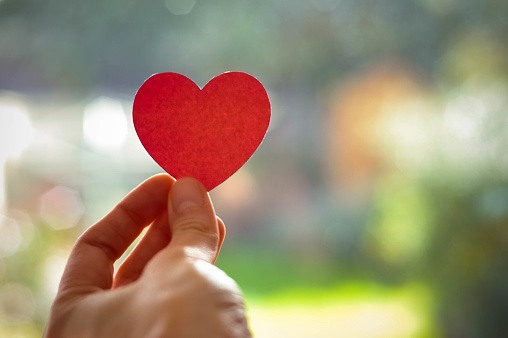
(NewsNation) — Love is in the air but not like it used to be.
Americans are less sexually active, less likely to be married and spending more time alone now than in previous decades.
The share of 40-year-olds in the U.S. who had never been married hit a record high 25% in 2021, up from 6% in 1980, according to the Pew Research Center. The percentage of “unpartnered” Americans has also risen, up about 10 points since 1990.
The Atlantic’s Faith Hill chronicled the trends in a recent essay titled, “The Slow, Quiet Demise of American Romance.”
“Research supports the idea that, in recent years, the United States has seen a particularly pronounced crisis of faith in romance,” Hill wrote.
Others, like Daniel Cox at the Survey Center on American Life, have declared a “romantic recession.”
“Most single Americans who have never been married still aspire to find a partner, but when it comes to dating, confidence and hopefulness are in short supply,” Cox wrote in a recent report.
Here are three things to know about the state of romance in the U.S. today.
Younger generations are dating less
The romantic recession appears to be hitting young adults the hardest.
In 2022, nearly half (47%) of U.S. adults under 30 were single, up six points from 2019, Pew Research found. In contrast, only 21% of 30- to 49-year-olds were single.
While it’s true that many Americans eventually partner up later in life, there’s also evidence that young people are dating less than previous generations did at the same age.
According to research by Jean Twenge and Heejung Park, the share of U.S. 12th graders who had ever gone on a date fell from 84% in the early 1990s to 63% in the early 2010s.
Social psychologists like Jonathan Haidt have argued that smartphones are a significant contributor to the rising disconnect among young people.
Meanwhile, Cox has made the case that the proliferation of pornography could be negatively affecting the way young adults approach dating.
There are also stark gender differences in the dating habits of young people. Pew found that more than 60% of young men described themselves as single in 2022, nearly twice the rate of unattached young women.
“Men in their 20s are more likely than women in their 20s to be romantically uninvolved, sexually dormant, friendless and lonely. They stand at the vanguard of an epidemic of declining marriage, sexuality and relationships that afflicts all of young America,” The Hill’s Daniel De Vise wrote in 2023.
Politics is pushing people apart
Today, single conservative men outnumber single conservative women, while there are more single liberal women than there are single liberal men.
In the current era of political polarization, those ideological differences have come to matter more, not less.
In 2023, The Washington Post’s editorial board warned that a “political dating mismatch” would threaten marriage if attitudes around political differences didn’t change.
“A cultural shift might be necessary — one that views politics as a part of people’s identity but far from the most important part,” The Post’s editorial team noted.
The cautionary message came in response to a growing gender divide that has seen men and women drift further apart politically, particularly among young people.
Most men (53%) aged 18 to 44 supported Donald Trump in the 2024 election, while 54% of women in the same age range backed Kamala Harris, according to an AP VoteCast exit poll.
Surveys suggest the widening ideological gender gap, which is largely due to women becoming more liberal at a faster rate than men, could be making it harder to date.
More than half (52%) of single women say they would be less likely to date a Trump supporter, according to the Survey Center on American Life. Among college-educated single women, that share jumps to 73%.
On the other hand, almost four in ten single men (39%) said they would be less likely to consider dating a feminist.
Researchers Lyman Stone and Brad Wilcox laid out the implications like this: “About one in five young single adults today will have to put a ring on someone outside their ideological tribe if they wish to marry.”
Educational differences also matter
Fewer men are attending college, and it’s a trend that appears to be hurting their marriage prospects.
Between 1960 and 2019, the marriage rate among men without bachelor’s degrees dropped by 24 percentage points, while men with bachelor’s degrees saw a 15-percentage point drop over the same period, according to a recent study.
The dearth of college-educated men has shrunk the dating pool for college-educated women, who tend to partner with fellow degree-holders, but recent research has complicated that narrative.
Media reports have long highlighted the dating struggles of college-educated women, but new research suggests the marriage rate among that group is fairly stable.
Instead, the trio of academics from Yale, Cornell and Harvard found that marriage has declined mostly among women without bachelor’s degrees.
“College-educated women have sustained stable marriage rates by increasingly ‘marrying down’ in education, partnering with men without college degrees. However, this doesn’t equate to marrying men with poor economic prospects,” the authors wrote.
The researchers concluded: “Concerns about declining marriage rates among college-educated women are misplaced; the real challenge lies in addressing the struggles of working-class men and women.”







